Although the origin of the Dhyani Buddha statue set is uncertain, they each have their own unequivocal meaning. Additionally, they are each associated with a virtue that is the result of purifying its corresponding negative emotion. Also, each Buddha represents a specific time in the life of the historical Buddha – Shakyamuni. Furthermore, they each have their own element, color, direction, ride a different animal and express their own mudras.
- Vairocana – is known as the “Great Illuminator” and his realm is the “Dharmadhatu” where all things exist in their ultimate true form. His wisdom is the all pervading wisdom of the Dharmakaya (truth body of the Buddha). Additionally, his color is white which represents the pure consciousness of Buddha Vairocana. It is believed that meditation on the color white can turn the poison of ignorance into the wisdom of reality.
- Ratnasambhava – is known as the “Jewel Born One” and his element is earth which embodies the aggregate of feeling. Additionally, Ratnasambhava is the Buddha of equanimity and his color is yellow. He seeks to eradicate the poison of pride and transmute it into equality. Meditation on the color yellow is believed to transform the delusion of pride into the wisdom of sameness.
- Amitabha – is the ruler of his western pure land Sukhavati. The pure land of Amitabha Buddha is the most sought after by devotees to Pure Land Buddhism. The wisdom of Amitabha Buddha is discriminating awareness, his element is fire and his color is red. Devotees believe that meditation on the color red can transmute the poison of attachment to the wisdom of discernment. Additionally, devotees believe that through the practice of mediation they can transport their consciousness into the field of pure perception (Sukhavati) at the time of death.
- Akshobhya – reigns over the Eastern Pure Land of Abhirati which means the “Land of Great Delight”. The Buddha Akshobhya is immutable and has mastered complete control over his passions. Additionally, the color of Akshobhya is blue and he embodies the aggregate of rupa (form). Devotees believe that meditation on the color blue will transform anger into the wisdom of equanimity.
- Amoghasiddhi – encourages devotees to be fearless because they are under the protection of the Dharma teachings. As a result, they have nothing to fear in life or death. Amoghasiddhi embodies the aggregate of mental formations and his color is green. Additionally, his consort is the goddess of accomplishment – Green Tara. Indeed, Tibetan Buddhists believe that meditation on the color green can transmute the poison of jealousy into the wisdom of accomplishment.
Identify the Dhyani Buddha statue Set
The Buddhist mudras are important aspects of Buddha statues because they illustrate the statues identity and meaning. As a result, we can identify each Dhyani Buddha by the mudra that they are displaying. Vairocana (Dharmachakra mudra, turning of the Dharma wheel), Ratnasambhava (Varada Mudra, gift giving or boon granting mudra), Amitabha (Dhyana mudra, meditation), Amoghasiddhi (Abhaya mudra, protection and fearlessness) and finally Akshobhya (Bhumisparsha mudra, calling the earth to witness). Click here to learn more about Buddha statue meanings.


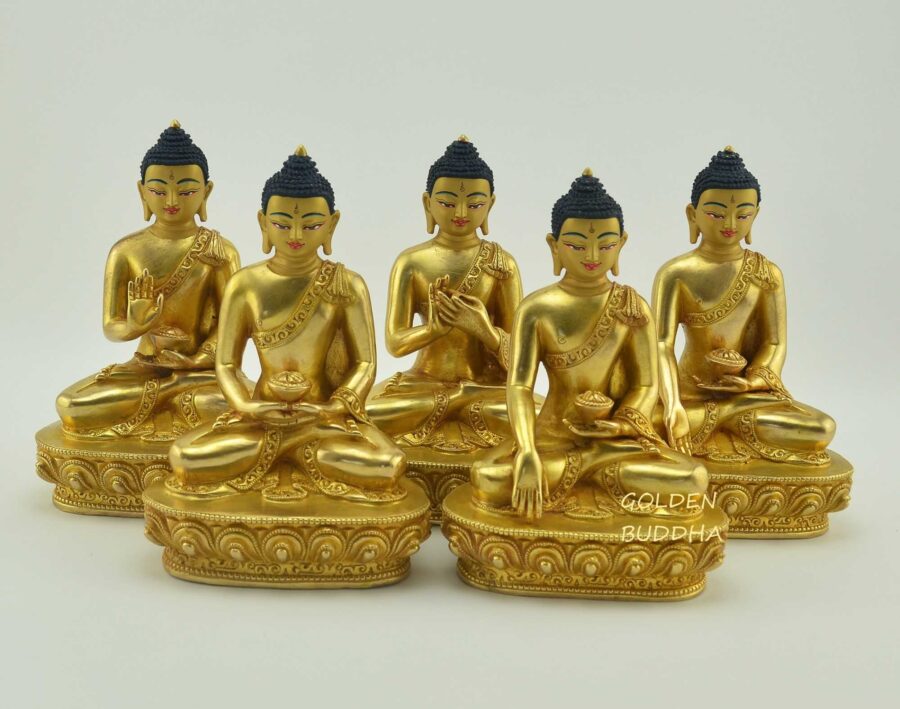
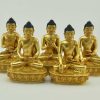
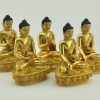
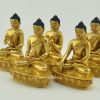
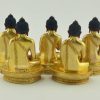
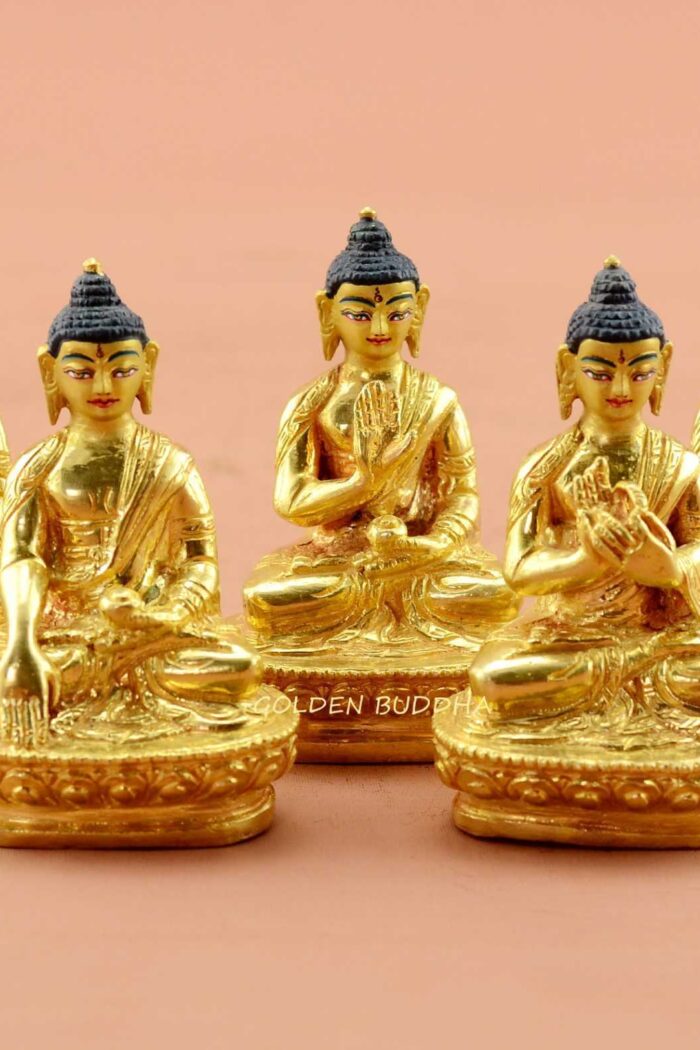
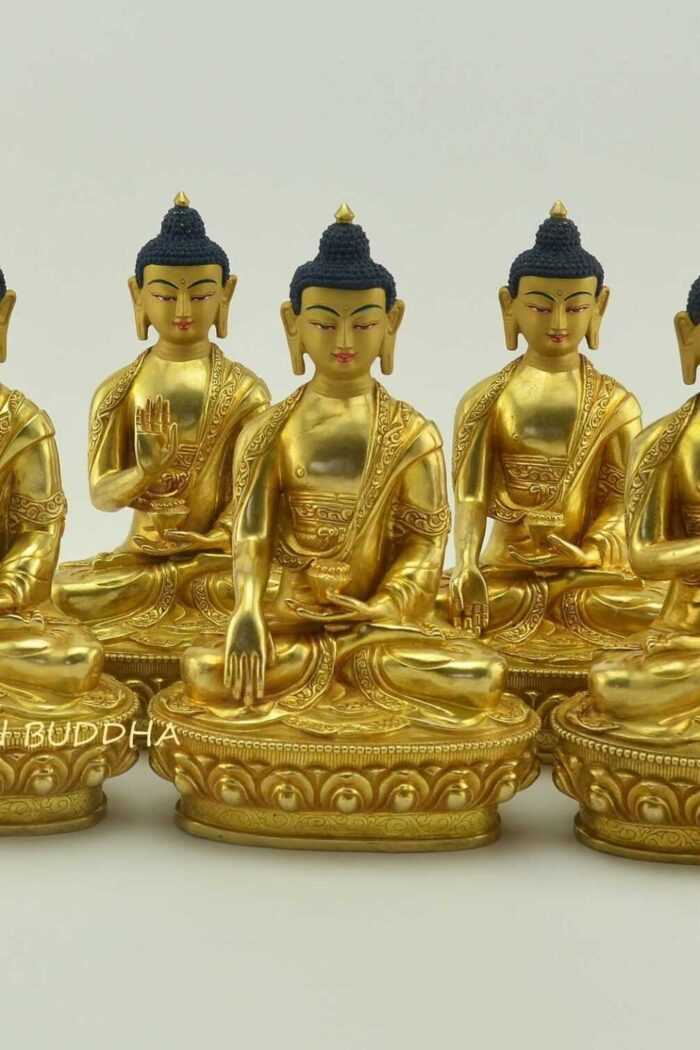
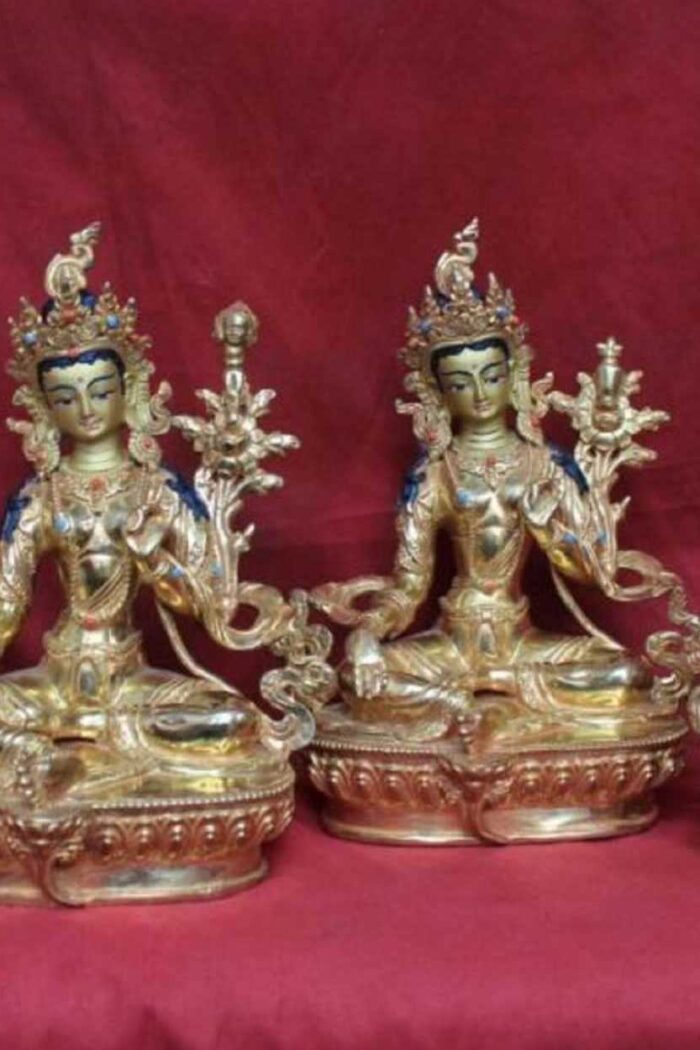
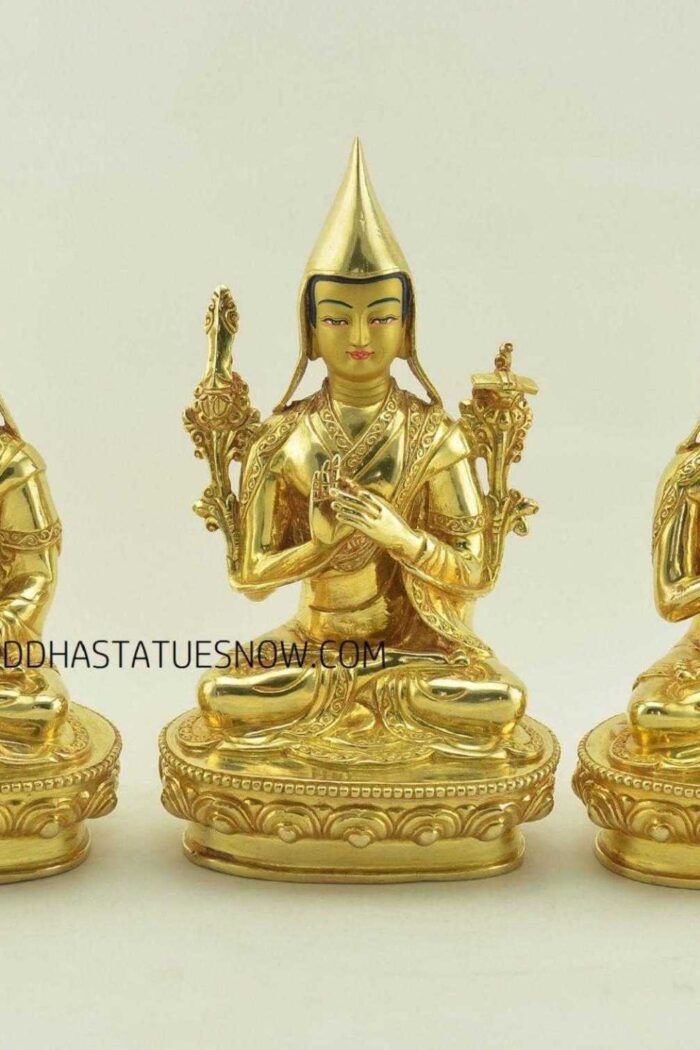
Curtis Elliott (verified owner) –
I purchased a Fully Gold Gilded 5.5″ Dhyani Buddhas Statue Set, Pancha Buddhas and must say how pleased I am with the quality and workmanship on all 5 of the set. The attention to detail is just exquisite. Edwin was extremely helpful in explaining and helping me understand the history and origin of each individual Buddha in the set. He also took the time to explain the placement and significance of the hands on each of the five in the set.